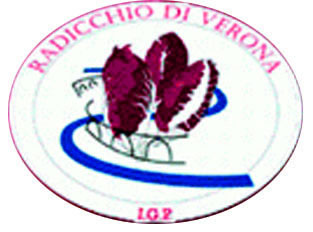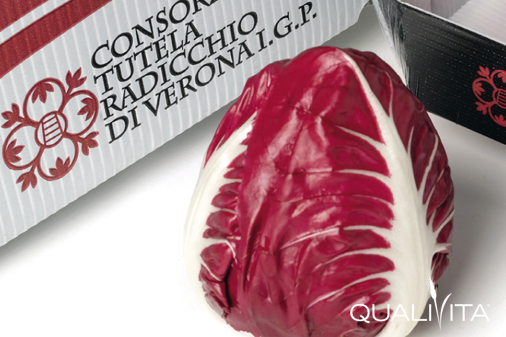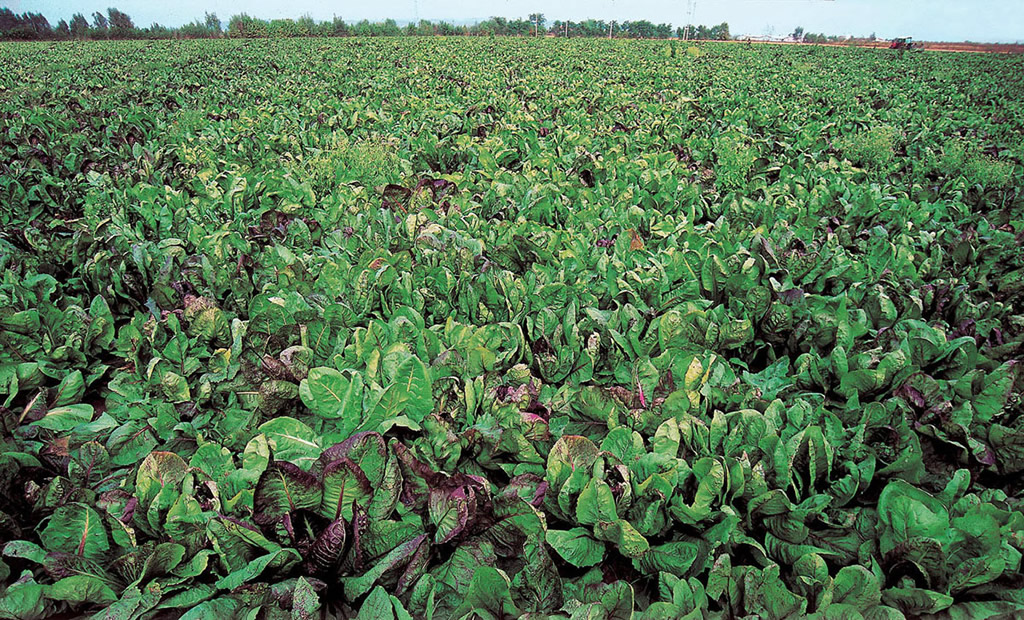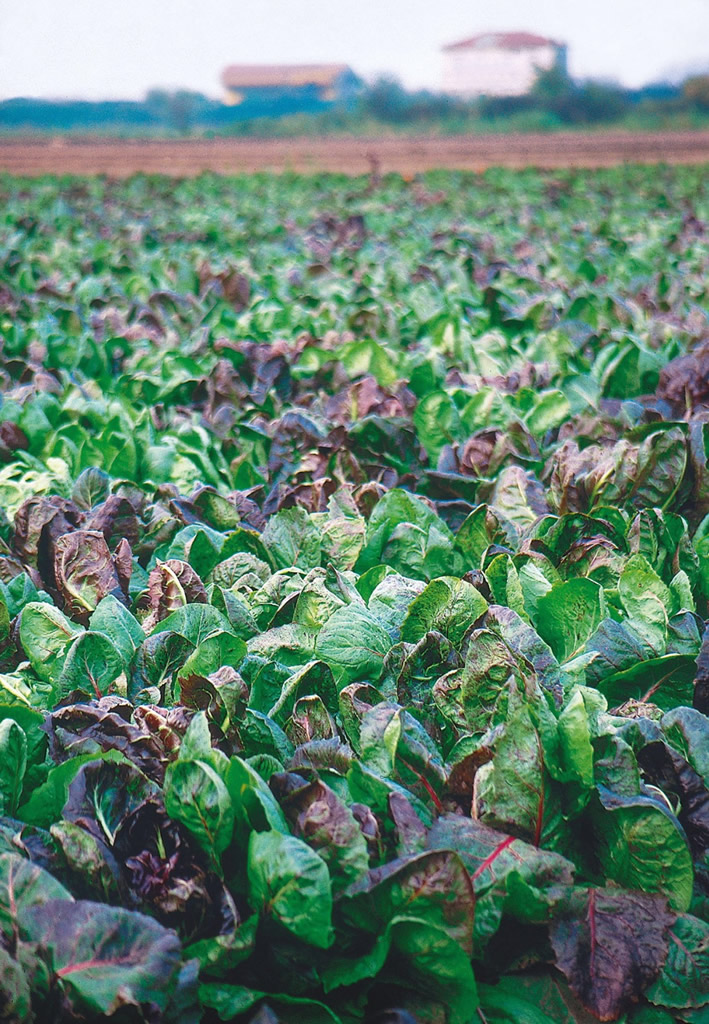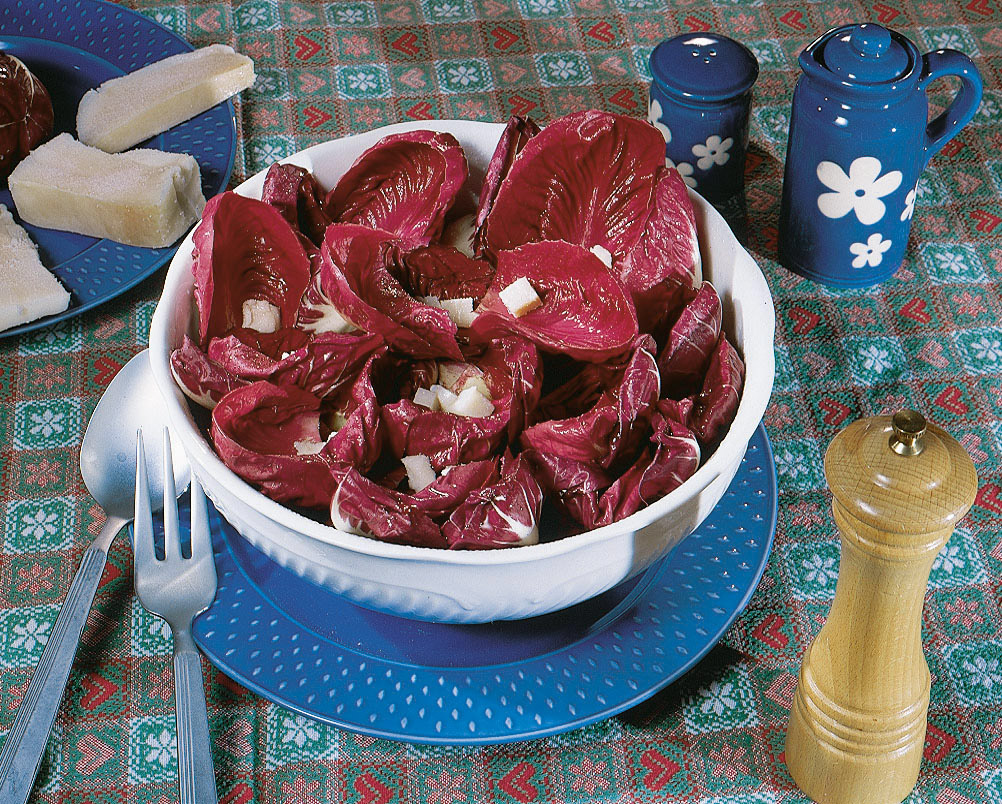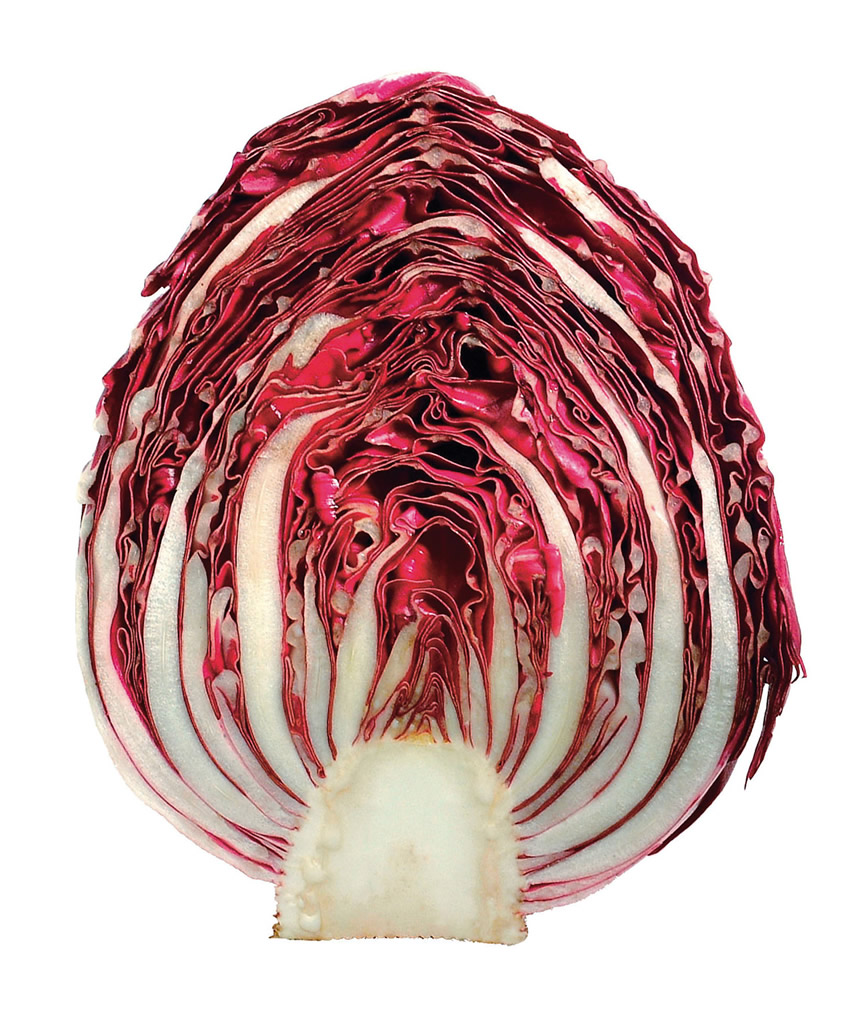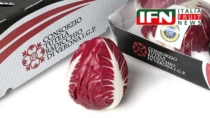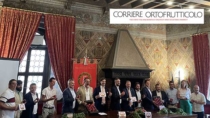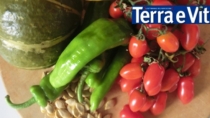Description
Radicchio di Verona PGI is a fresh leafy vegetable belonging to the botanical species Cichorium inthybus L. and is distinguished by two varieties: Precoce (early-ripening) and Tardivo (late-ripening).
Production Area
The production area of Radicchio di Verona PGI is within a few municipalities in the provinces of Verona, Vicenza and Padua, in the Veneto region.
Production Method
Radicchio di Verona PGI is grown in sandy soils which are rich in organic substances, deep, well drained and extremely fertile. The early-ripening variety is sown between July 1st and 31st, and harvesting begins in mid-September; the total production per hectare of finished product is 13 tonnes. The late-ripening variety is sown between July 21st and the end of August; the total production per hectare of finished product is 11 tonnes. After harvesting, only the late-ripening radicchio is whitened; it is left outside in piles and covered with either an opaque nylon sheet or straw. It is left in almost complete darkness for 20 days, thereby reactivating vegetal activity and the roots’ absorption of nutritive substances. This enables the new leaves to acquire a pearly white colour and their typical crunchiness, at the same time reducing the bitterness. This stage takes place at low temperatures, below 10 °C (the ideal temperature being 0 °C). The heads are then trimmed, which involves the external leaves being removed and the roots being cut to a length of 3-5 cm; they are then washed.
Appearance and Flavour
Radicchio di Verona PGI has whole, sessile leaves, with smooth, unbroken edges, which curve upwards to resemble a shower head. The leaves are deep, dark red in colour and close together, forming a typical round and compact head. The leaves’ main vein structure is white, and they are crunchy and slightly bitter.
History
Radicchio di Verona PGI is part of an ancient and established tradition. Radicchios were already being grown in broli (vegetable gardens) at the end of the 18th century. The first radicchios were also cultivated on Verona’s high plains, between rows of fruit trees and vines, and were known as “red chicory”. The crops became more specialised with the introduction of the “whitening” technique, brought to Italy at the end of the 18th century by the Belgian agronomist Francesco Van Den Borre. The commercial cultivation of Verona radicchio began at the beginning of the 1900s.
Gastronomy
Radicchio di Verona PGI should be kept in the refrigerator, inside a plastic bag or wrapped in a tea towel. It is an extremely versatile product, as it can be eaten both raw and cooked, in salads or as a main ingredient in numerous traditional Veneto dishes. It is excellent in risottos and crudites, but also grilled or fried as a side dish for meat and cheese, paired with local red wines.
Marketing
The product is marketed as Radicchio di Verona PGI Precoce (early-ripening, from September 15th to December 15th) and Tardivo (late-ripening, from December 15th to the end of April). It is packed in specific suitable packaging, with a maximum overall weight of 10 kg, on which there is a tamper-evident seal. For the retail sale of packets of over 2 kg, the product can be removed from the packaging, with the consequent breaking of the seal. If destined for processing, it is possible to use packaging with a minimum net weight of 250 kg. As a fourth range processed product, it can be sold cut, in specific packaging.
Distinctive Features
Radicchio di Verona PGI is distinguished by its unmistakable heart-shape, the particular crunchiness of the leaves, its deep red colour and the slightly bitter flavour, all of which are given to the low winter temperatures. Furthermore, the secular work of the growers and the constant research and implementation of traditional and specific cultivation methods, have contributed to the remarkable reputation of Radicchio di Verona PGI.



